I don’t know why it hasn’t occurred to me, before now, that I could emulate Intellivision games just as easily as I do PS2 games or any other retro game.
Well, that’s not exactly true.
Posting about the merger of these two brands yesterday opened the floodgates to people reminiscing about their good old days playing a bunch of really cool games on their old Intellivisions — much cooler games than those for the old Atari 2600, like the one I had.
I watched a lot of TV back then, and I saw all the commercials, and really envied the people who could afford an Intellivision. I’d saved up for a long time to buy the Atari 2600, and any remaining pennies went to buy the games, which were $25 and up. That was a lot of money, back in the early 80s, for me, anyway.
So I played the 2600, but I saw all those TI-99/4a’s and ZX Spectrums and every other consoles as sour grapes. I bet they all stunk.
I still wanted to play the games, though.
Every few weeks, we head down to Newington, CT to have lunch at Arby’s and hit up the new and retro game stores. I usually find something unexpected.
This week, I went looking for the board game Canvas at Tabletop Games and Shining Force II for the SEGA Genesis. But things don’t always end up the way I expect, and they didn’t this time.
Intellivision games were on my mind, and Retro Games had shelves of them. Two copies of Tron: Deadly Discs (one badly damaged), a copy of Tron: Maze-a-Tron, Reversi, several AD&D games, a mess of sports games and arcade ports, and no copies of Utopia, an empire-building game I’d never heard of before.
None of these games had anything close to an actual manual.
I grabbed a copy of Deadly Discs and the Reversi game and we headed home. The clerk at the store guaranteed the two games would either work or could be returned within two weeks, so I was pretty excited to test them out.
I don’t actually have an Intellivision at home, so I planned to use an emulator. Problem: How to get the data from the cartridges, into my computer? Solution: all I had to do was lay the cartridges down on top of the computer, lower the blinds and leave the room, and when I came back in an hour, the games had been loaded onto my computer through some mystical, magical power that I will never understand.
Reversi, AKA Othello, has been a little bit of an obsession of mine since high school and college, where we played it a lot during study hall. It was one of the first games I ever programmed, though I don’t know that I’ve ever written one that played decently.
I like testing my skill against the games when I come across them. I dominate the Atari 2600 and Atari 800 versions. I dominate the tutorial level and first island in Othello World, but fall short in the endgames for the next island. Online games are hit and miss, but usually miss.
A problem with the Intellivision version is that the Intellivision controller was nothing like the XBox controller I use on my Windows machine.
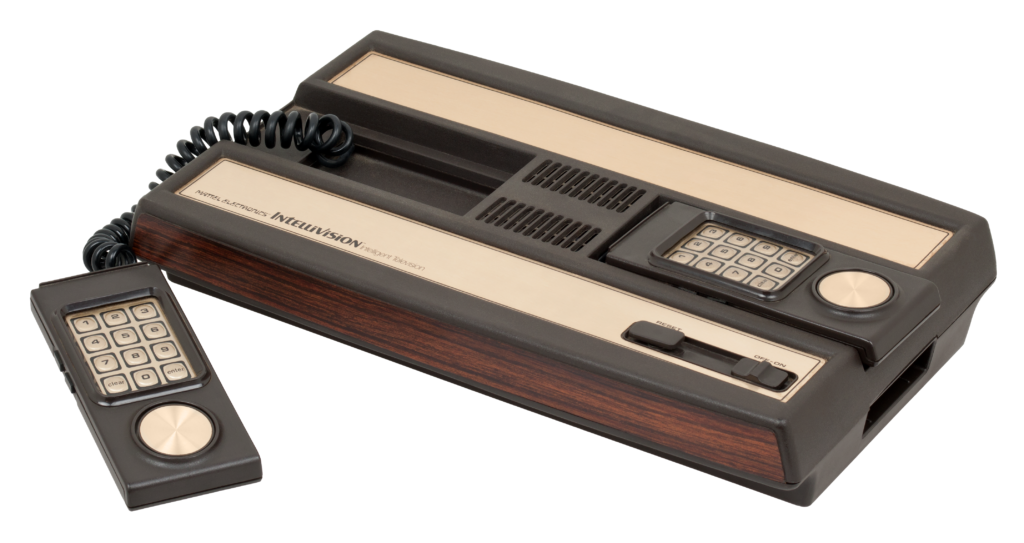
The emulator allowed me to (slowly) select numbers from an onscreen keypad. I don’t have a ten-key keypad on my keyboard, but that wouldn’t matter so much as the computer ten-key is vertically flipped from the one on the original Intellivision — 789-456-123 instead of 123-456-789.
It is possible to get adapters to connect old Intellivision and Intellivision II controllers to modern PCs, but I have to really wonder — is it worth it? Maybe? But not just for Reversi.
Once I randomly got it to start in a 64 square board and single player, I beat Reversi easily. It is cool that you can choose different board sizes and difficulty levels, and it is really cool that you are playing Reversi as opposed to Othello. In Othello, four pieces — two white and two black — are placed for you. In Reversi, the first two moves let the players play them how they like in the middle four squares. They can be diagonal or parallel; it’s up to the players. Well, it’s up to the second player. Black moves first; White decides what game they’re playing. The same is true in Othello, where Black moves first and White decides the opening.
As White, I forced the diagonal placement I’m familiar with, forced the Perpendicular opening that I’m also most familiar with, and went on to force it to build a wall that I finally opened on my schedule. There was a moment when I made a wrong move and thought I’d lost the whole thing, but it made a mistake as well and I was able to recover.
Still, it was a fun game, but it’s going to be Othello World that I keep trying to beat. Worth buying a controller for? I don’t think so.
In Tron: Deadly Discs, you hurl your disc at the enemy NPCs using the numeric keypad to choose direction, while using the disk control to run in directions. Weak enemies need to get hit only once; tougher enemies, more hits needed. Hitting the doors where the enemies come out lock them and summon Recognizers to unlock them between rounds; you can kill them if you’re careful.
Without a physical numeric keypad, it was nearly impossible to hurl the disc with any sort of accuracy, since I had to bring up the onscreen controller display, select the number I wanted, dismiss the display, and hit the “simulate a press of the number I just selected”. Clearly unusable.
The characters move smoothly, though, and it wasn’t all that hard to dodge the discs from the NPCs, especially since I wasn’t able to really throw any of my own. I did try to spawn the Recognizer by locking the doors, but I never managed to clear the level so they’d show, so…
I didn’t find Utopia at the store, but it also mysteriously was transmitted to my computer by some arcane power. Utopia seems to be a M.U.L.E. like game where you select things to build or upgrade and the moves are done simultaneously. However, without a manual or any onscreen help, I was just mashing buttons and had no idea what was going on. I guess I should look for that manual, huh.
According to Wikipedia, this game is considered the first city builder simulation. There is a PC remake for this game from Bluish-Green Productions. That might be fun to try.
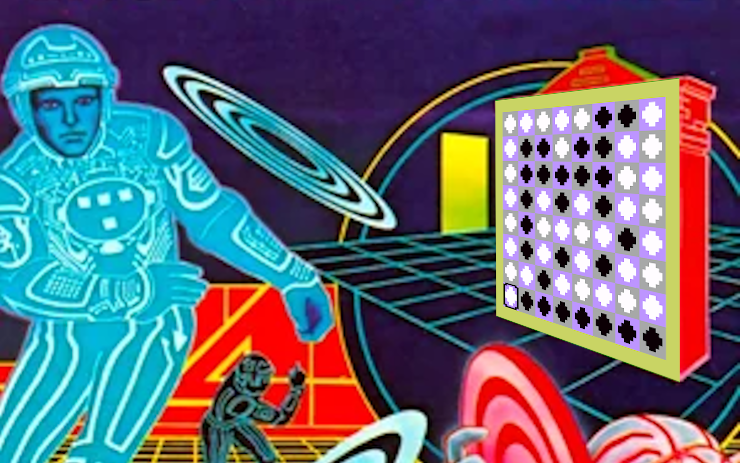
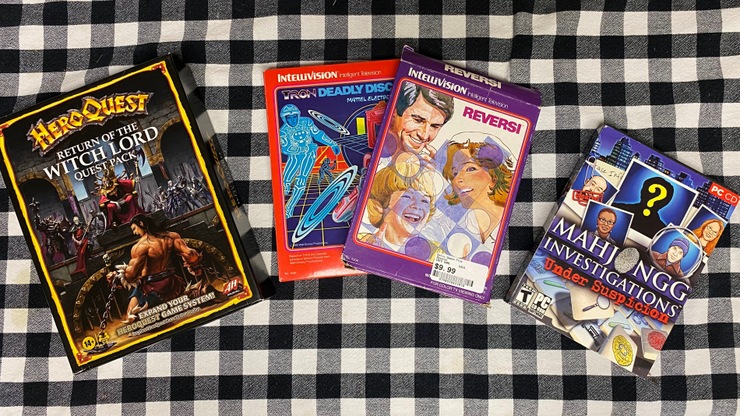

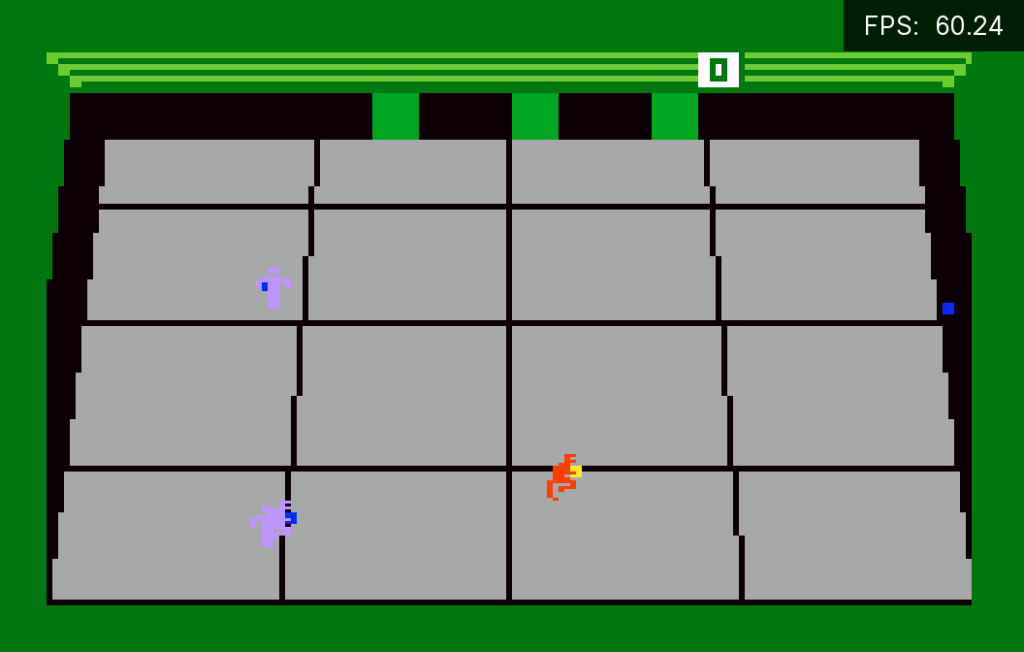
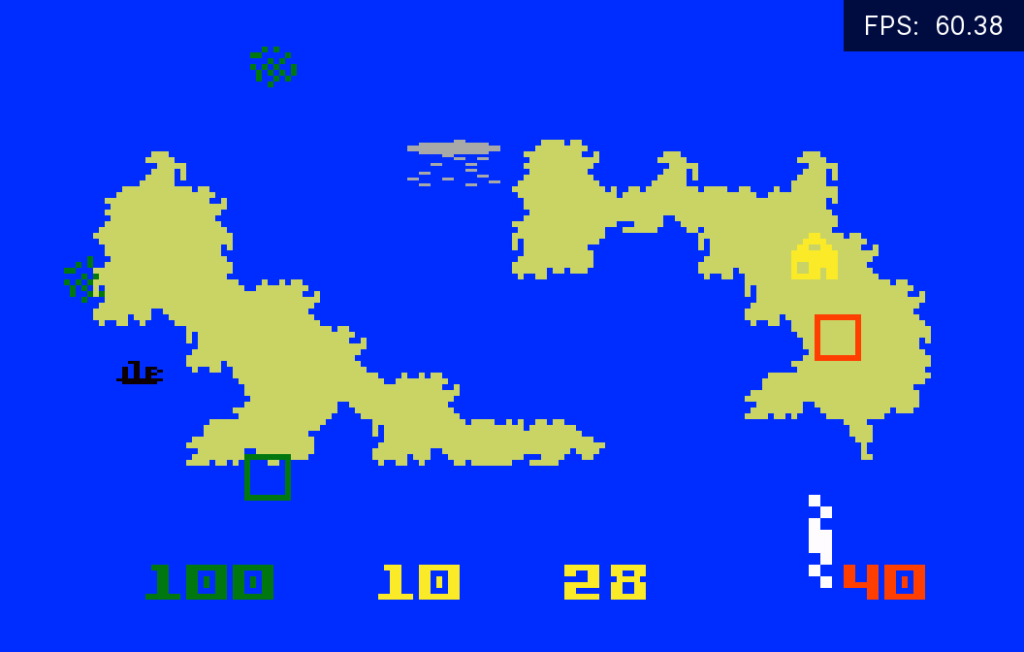




If memory serves, game came with a little insert for the controllers that showed you what button did what. Did your retro-store finds include these?
Or maybe I’m imagining all that.. it HAS been what, 45 years since I laid eyes on an Intellivision!
Nope, box and cart, and that’s it.